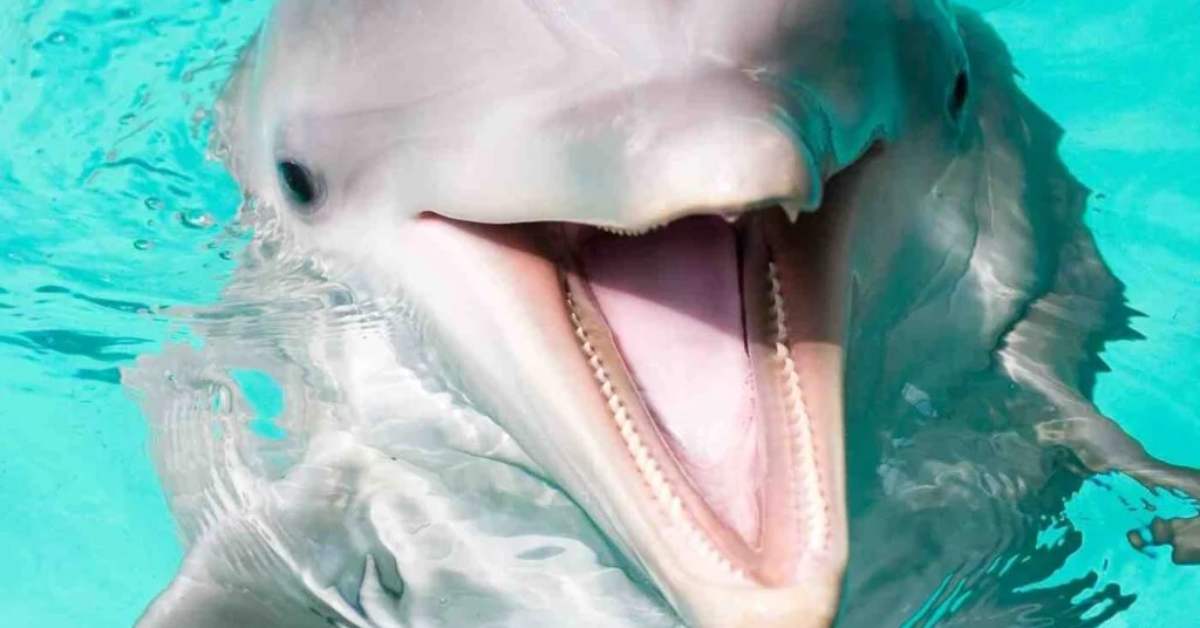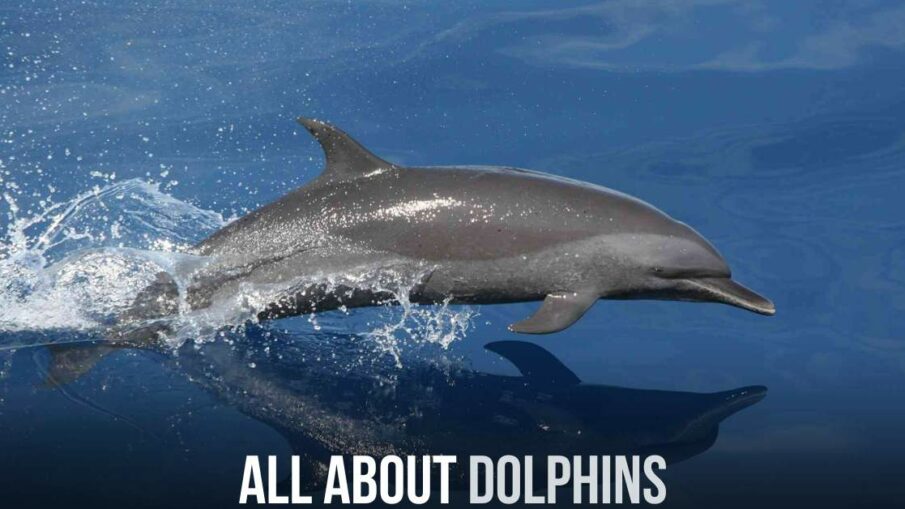Dolphins are truly remarkable creatures of the sea. They captivate our hearts with their playful nature, but there’s so much more to them than meets the eye. In this blog post, we dive deep into the world of dolphins, exploring their social behaviors, intelligence, diverse species, and the crucial need for their conservation.
The Social Life of Dolphins

Imagine living in a tight-knit community where you swim together, protect one another, and hunt for food as a team. That’s the life of a dolphin in a pod. These social mammals find safety and companionship in their pods, often ranging from 2 to 30 individuals, depending on the species and circumstances.
However, what’s even more astonishing is the formation of superpods, where hundreds, and sometimes thousands, of dolphins come together temporarily. Superpods are a sight to behold, forming during events like mating or when prey is abundant.
But what makes dolphins truly exceptional is their return to their smaller pods after these gatherings. It’s a testament to the strong bonds within their groups, a family reunion of sorts before the next adventure.
The Tragic Tale of Extinction
The story of dolphins isn’t all joy and playfulness. One heartbreaking chapter is the tale of the baiji or Yangtze River dolphin. Once inhabitants of the Yangtze River in China, they are now believed to be extinct, a devastating result of human actions. The baiji faced pressures from industrialization and habitat destruction, ultimately leading to their decline. Despite international efforts, a 2006 expedition failed to record a single baiji, forcing scientists to conclude that this species had likely vanished forever.
Dolphins: Mammals, Not Fish
While they glide through the water with the grace of fish, dolphins are, in fact, mammals. This places them in the company of whales, seals, and manatees. Dolphins exhibit several characteristics that set them apart:
- Warm-Blooded: Dolphins can regulate their body temperature, a vital trait for survival in chilly waters.
- Lungs, Not Gills: Unlike fish, dolphins breathe through lungs, requiring them to surface periodically for air through their blowholes.
- Live Birth: Dolphins give birth to live young rather than laying eggs, nurturing their calves close to their hearts.
- Nursing: They produce milk to nourish their offspring, displaying maternal care akin to mammals on land.
- Body Hair: Surprisingly, dolphins start life with body hair, a vestige of their evolutionary past.
Unlocking the Intelligence of Dolphins
Dolphins stand as one of the world’s most intelligent animals, boasting remarkable cognitive abilities. Their intelligence shines through their communication, perception, and problem-solving skills. Dolphins communicate with clicks and whistles, using echolocation to navigate and even detect metal in humans. Their complex methods of communication remain a subject of ongoing research, revealing new insights into the depths of their understanding.
A Dive into Dolphin Communication
Dolphins communicate through whistles, clicks, and social interactions. Whistles are particularly fascinating as they can be heard by others of the same species from miles away. Dolphins even develop signature whistles, akin to names, which they use to identify one another. Echolocation, a skill unique to dolphins, serves as both a communication tool and a navigation aid. It allows them to “see” with sound, discerning the size, shape, and even material of objects around them.
The Diverse World of Dolphin Species
Dolphins come in an astonishing array of species, each with its unique characteristics. Here’s a glimpse into some of the most remarkable ones:
- Amazon River Dolphin: Flourishing in freshwater environments, these dolphins boast a captivating pink skin as they mature.
- Ganges River Dolphin: Thriving in the Ganges River, they have a distinctive sideways swimming style for efficient food gathering.
- Commerson’s Dolphin: Found off the coast of Argentina, their panda-like black and white coloration makes them stand out.
- Risso’s Dolphin: Deep-sea enthusiasts, these dolphins bear battle scars from squid encounters, showcasing their prowess as predators.
- Killer Whales (Orcas): Surprisingly, killer whales belong to the dolphin family, known for their intelligence and unique communication.
- Spinner Dolphins: Renowned for their acrobatic spins out of the water, these dolphins prefer warm, shallow waters.
- Short-Finned Pilot Whale: Easily recognizable with their squared-off heads, they travel in close-knit pods.
- Hourglass Dolphin: Elusive and often found in the Antarctic, these small dolphins resemble killer whales in appearance.
- Striped Dolphin: Often seen in aquatic centers, they dazzle with their striped patterns and acrobatic leaps.
- Bottlenose Dolphin: Perhaps the most popular species, known for their intelligence and distinct appearance.
The Enigmatic Lives of Bottlenose Dolphins
Let’s take a closer look at bottlenose dolphins, the beloved and iconic species often associated with marine life. With varying shades of grey, streamlined bodies, and an average length of 6 to over 12 feet, they are versatile predators. Their diet includes fish and squid, hunted with remarkable tactics like herding prey and even catching leaping fish out of the air.
Bottlenose dolphins are found in tropical and temperate waters, avoiding extreme Arctic and Antarctic environments. They exhibit counter-shading, with a lighter belly for camouflage against predators. Their habitat ranges from the Pacific Ocean to the Atlantic Ocean, with diverse preferences.
The Fragile Existence of Dolphins
Despite their adaptability, dolphins face a myriad of threats. Climate change, pollution, and entanglement in fishing gear pose serious risks. The loss of habitat and difficulty in finding food further endangers their existence. Understanding these challenges is the first step towards preserving their world.
The Urgent Need for Conservation
Many dolphin species, such as the Yangtze River dolphin, Maui dolphin, Ganges River dolphin, and short-beaked common dolphin, are endangered or extinct. Human actions have pushed these creatures to the brink. To protect them, we must:
- Reduce pollution and waste
- Practice recycling
- Lower carbon emissions
- Follow marine-friendly regulations
- Support conservation programs
- Stay educated on dolphins and environmental issues
Responsible Dolphin Encounters
If you dream of swimming with dolphins, opt for ethical encounters in marine facilities rather than the wild. Dolphins are wild animals, and close encounters should be conducted safely and responsibly.
In conclusion, the world of dolphins is as diverse and intriguing as the oceans they inhabit. Their intelligence, social bonds, and the challenges they face make them a symbol of both wonder and concern. By understanding and protecting these remarkable creatures, we can ensure that future generations can continue to marvel at their beauty and grace in the world’s oceans.


Leave a Reply